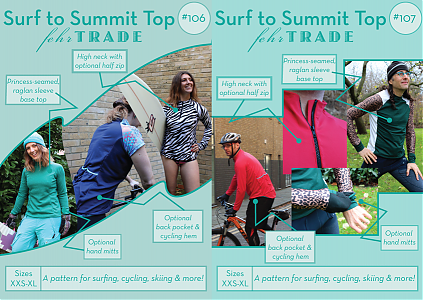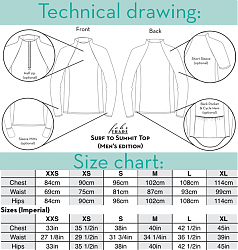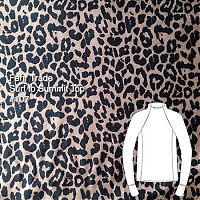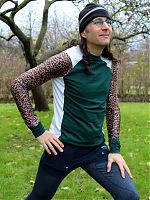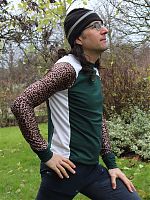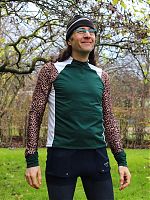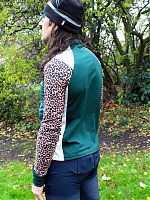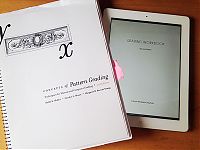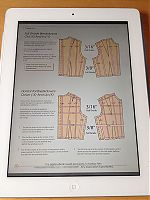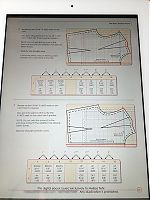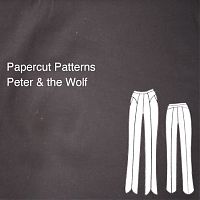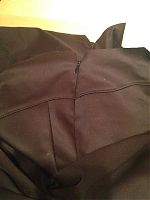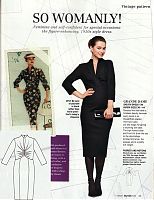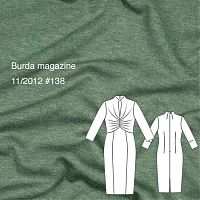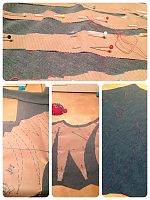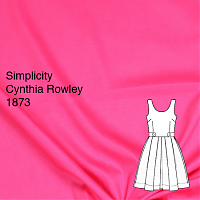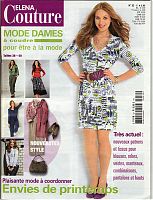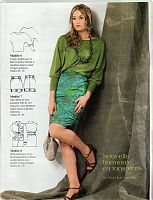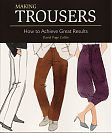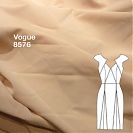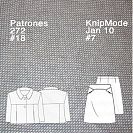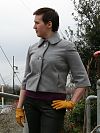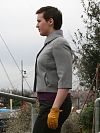Surf to Summit Top – Four Winter Running versions
Phew! It’s been one heck of a few weeks! I’ve shown you all of the many different versions of the Surf to Summit Top pattern that I’ve made not only for myself, but also my athlete-models. So far you’ve seen versions for snowboarding and cycling, and surfing, but today’s versions are all for winter running.
One of the great things about this design are all the opportunities for colourblocking, and I wanted to play around on this version so you can really see the seamlines – plus I added an extra seam of my own on the shoulders! On the Front and Back, I used some forest green UA Cold Gear fabric (now long gone) from my stash. On the Side panels, I used some reflective fabric from The Rain Shed. A note about this fabric, though – I really like it, but it is not lycra as stated in the description – it’s much, much closer to the sort of textured fabric you find in technical race tees (like DriFit). For the sleeves I used some leopard-print lycra from UK Fabrics, but I didn’t have quite enough leftover from my leggings to fit the entire sleeve in, so I introduced a curved seamline and used some reflective fabric at the shoulder instead.
But let me introduce my athlete-model, Daniel. I’ve probably run more training miles with Daniel than anyone else on earth and he’s a great friend of mine, in additional to being a truly inspiring runner. Dan only started running a few years ago, and has truly embraced endurance running, going from running his ever first race (a 10k) to running his first 100km ultra this year, with a bunch of marathons thrown in for good measure. He’s even run the grueling Mont Blanc Marathon, and regularly passes runners half his age on Tuesday nights.
I made this men’s version of the Surf to Summit Top at the very end of the testing process, so it’s identical to the version you buy, and I especially like how this fits Dan in the waist and hips – this is exactly how I intended the men’s version to fit. It’s slim-fitting without being loose, but isn’t skin-tight, either. If you prefer your tops to fit differently, I’ve included instructions on how to alter the pattern to get the fit you want, as I discovered in testing that men are really polarised on how they like their exercise tops!

